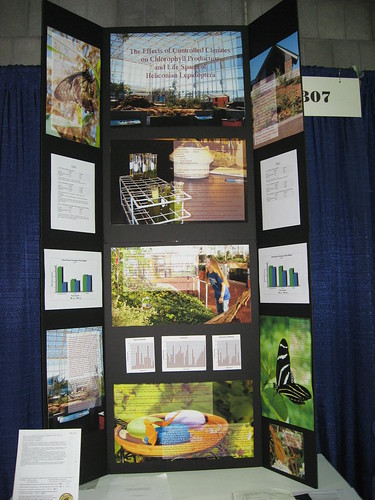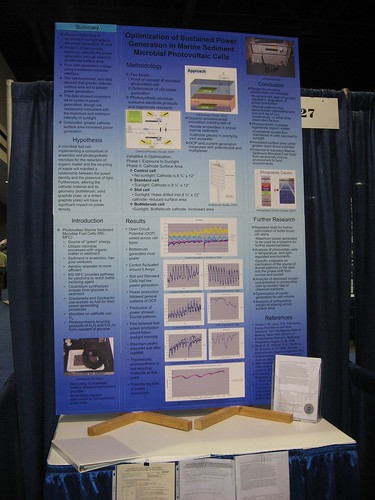 So I've arrived at the Intel International Science and Engineering Fair (ISEF) in Atlanta and I'm starting to get my bearings. I've been oriented to judging and have been previewing the projects. There are more than 1500 projects from students in grades 9-12 from 51 countries and the students are competing for almost $4 million in prizes and scholarships. Almost half of the contestants are girls. There will be an estimated 550 judges tomorrow, making sure that each student gets seen by 6 "Grand Awards" judges plus special awards judges representing universities and professional societies. My feet and brain hurt already.
So I've arrived at the Intel International Science and Engineering Fair (ISEF) in Atlanta and I'm starting to get my bearings. I've been oriented to judging and have been previewing the projects. There are more than 1500 projects from students in grades 9-12 from 51 countries and the students are competing for almost $4 million in prizes and scholarships. Almost half of the contestants are girls. There will be an estimated 550 judges tomorrow, making sure that each student gets seen by 6 "Grand Awards" judges plus special awards judges representing universities and professional societies. My feet and brain hurt already.
Below the fold, I thought I'd show some of the first projects that caught my eye.

"The effects of controlled climates on chlorphyll production and lifespans of Heliconian lepidoptera" by Stephanie Seman and Layne McBeath of Burkburnett, TX. Their results confirmed their hypothesis that plants would produce a higher chlorophyll concentration and butterfly life spans would increase in a stable, temperature controlled environment.

"Effective formaldehyde testing of particleboard in comparison to the standard EPA level" by Brianna Marie Arendt of Chandler, AZ. The student built a chamber and added water and particle board (to simulate hot humid conditions) and found that without a polyurethane coating and primer/sealant the board had higher than regulatory levels of formaldehyde. Adding the coating and sealant seemed to help.

"Optimization of sustained power generation in marine sediment and microbial voltaic cells" by Joy Lee, Sumit Malik, and Philip Griselda of Alexandria, Virginia. The team designed and built a land-based microbial photovoltaic cell.
I'll post some more pictures and experiences later this evening, but for now I am off to catch a panel discussion with some Nobel laureates....
Hooray for almost half girls!